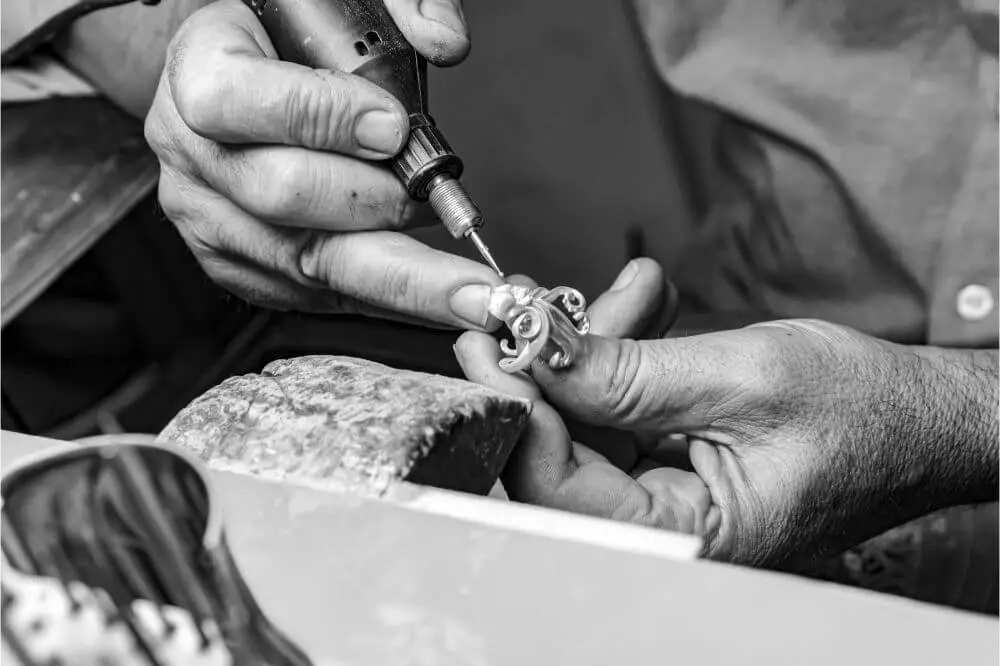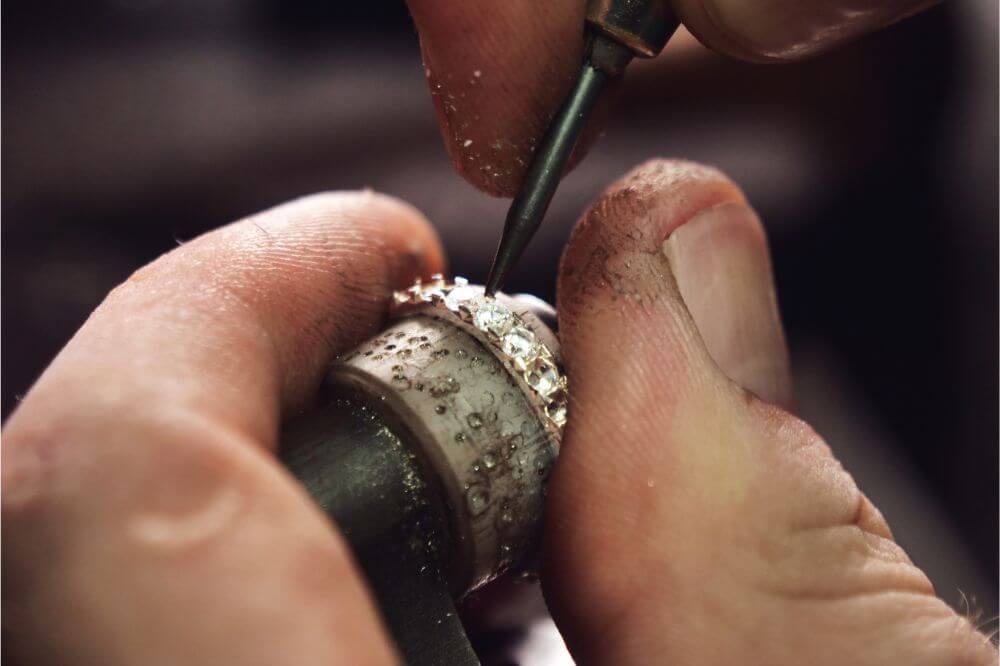When you are making jewelry pieces, you need to join pieces together. A soldering iron is necessary for this process. The soldering iron is the go-to device for filling the split on the jump ring or attaching the ring to another jewelry piece.
How do you use the soldering iron when making jewelry? Soldering jewelry is not the same as soldering electric circuits. The amount of heat used in jewelry making is higher than that used to melt electric circuits. The soldering gun uses an open flame of about 1700°F; this temperature melts the electric circuit.
The soldering flame is predominantly used when making jewelry. It is used for tinning the molten wire onto the jewelry piece. The flame quickens the process of melting and connecting metals.
Materials Needed for the Jewelry Making Process
The type of soldering iron used in jewelry making depends on the type of jewelry metal in use. For heavy metals like gold and silver, you need a soldering torch. On the other hand, non-precious metals require soft soldering. A soldering gun or an electric soldering iron is sufficient for this type of jewelry.
The solder wire used for non-precious metals is a mixture of lead and tin. You can also use low-lead and iron solders. For heavy metals, the brazing solders contain low melting cadmium to lower the melting point of silver or are made of low melting silver. Flux is another important requirement when soldering jewelry.
Flux is a mild acid that coats the jewelry to protect it against oxidation. It also cleans the jewelry metal and makes the solder wire stick. Different types of flux are used for different types of metals. Flux used for heavy metals contains fluorides, while flux used for non-heavy metals acidic examples include zinc chloride, alcohol rosin, or an organic rosin base.
The pickling solution is needed to remove flux and oxide from the surface of the jewelry. Examples of pickling solutions used for heavy metals are sulphuric acid or nitric acid in water or the commercially prepared Sparex. For non-precious metals, even soap is efficient to remove flux and oxides.
Another material needed for soldering jewelry is the dump sponge that comes with the soldering iron. You can buy a cellulose sponge if you do not have that sponge. The sponge cleans the soldering tip. A soldering stand and a fireproof surface to keep you from burning your work station when you direct the soldering torch in the jewelry making process are also important.
Have third-hand tools better known as holders for holding jewelry pieces while soldering. The jewelry gets hot during the soldering process, so holding the jewelry pieces with a holder, clump, binder clips, or cross tipped tweezers helps prevent burns.
Similarly, have applicants like tiny brushes or cue tips for applying the flux on the jewelry piece protects your skin from touching the flux. Flux is a corrosive chemical. It should not be handled with bare hands. Once the working station is set, you can proceed to work on your jewelry.

The Soldering Process
Apply flux on a piece of jewelry. Coat the jewelry piece with enough flux for it to hold the metal pieces together. Even if the solder remains intact on the jewel after soldering, it comes off later. Suppose the flux coated too little, the solder wire will melt into a little point. Clean your soldering gun while hot and quickly set it on the tinned point to remove the melted solder.
After the flax, heat the soldering gun to keep it hot; this step is unnecessary for a butane soldering iron because this type of soldering device heats up instantly. Electric soldering irons take some time to heat up.
Do not forget to clean the tip of the soldering iron before use. You can clean the tip with the damp sponge or the Sal Ammoniac block to eliminate impurities. The molten wire does not stick to a dirty tip. Impurities on the soldering tip must be removed for the solder wire to remain on the tip.
Clean the tip until it is shiny before melting the soldering wire on it. The cleaning process occurs throughout the soldering process because burned residue from the soldering wire and flax builds on the soldering iron making it black and grungy. The best way to preserve your soldering tip is to coat it with solder wire after use; this is known as tinning. The wire protects the tip from humidity, dust, rust and other forms of impurities. Clean the tip and tin it again before use.
Once your soldering tip is clean, melt a little bit of the soldering wire on the soldering tip. Take the soldering iron and set it in the place of your jewelry that needs joining. Just lay the soldering iron against the metal. Do not rub or hop. Use your third-hand to hold the jewelry in place while you set the soldering iron.
Do not melt a lot of the soldering wire on your device. If you have put too much solder on your jewelry, put flax on the melted solder to remove the melted solder. Do not worry about molten solder falling on other portions of your jewelry. Solder only sticks where there is flux. The solder goes right off the jewelry if there is no flux. However, only apply flux on the areas you are soldering.
After the soldering process, wash the jewelry with detergent to remove flux and other reactive chemicals. Apart from corroding your skin, flux interferes with the soldered portions of the jewelry.
Precautions for Jewelry Making with a Soldering Iron
Temperatures are a lot higher when using the soldering device for jewelry making. The heat from the device, molten solder wire and flux cause serious burns. Take the necessary precautions before working on your jewelry.
Never leave the soldering iron unattended. Create ample space and adequate ventilation in your working area to prevent any accidental burns. Additionally, remove any jewelry on you and wear short-sleeved shirts to keep heat, flames and melted metal from scorching your clothes. Wear trousers and closed shoes as a precaution against accidents like falling molten solder, soldering iron or flux.
Wash your hands after using the soldering tool to remove any chemicals in your hands.

